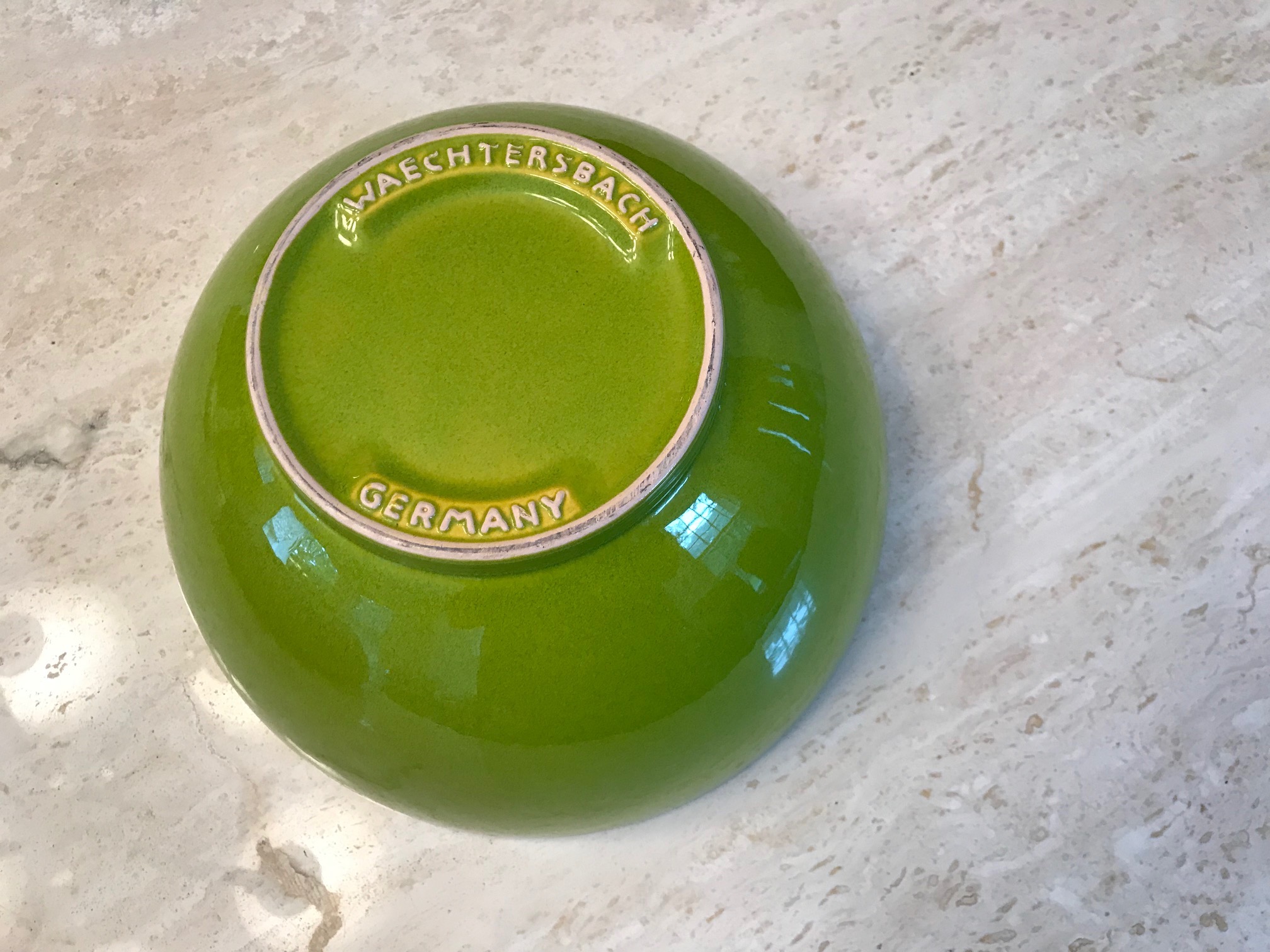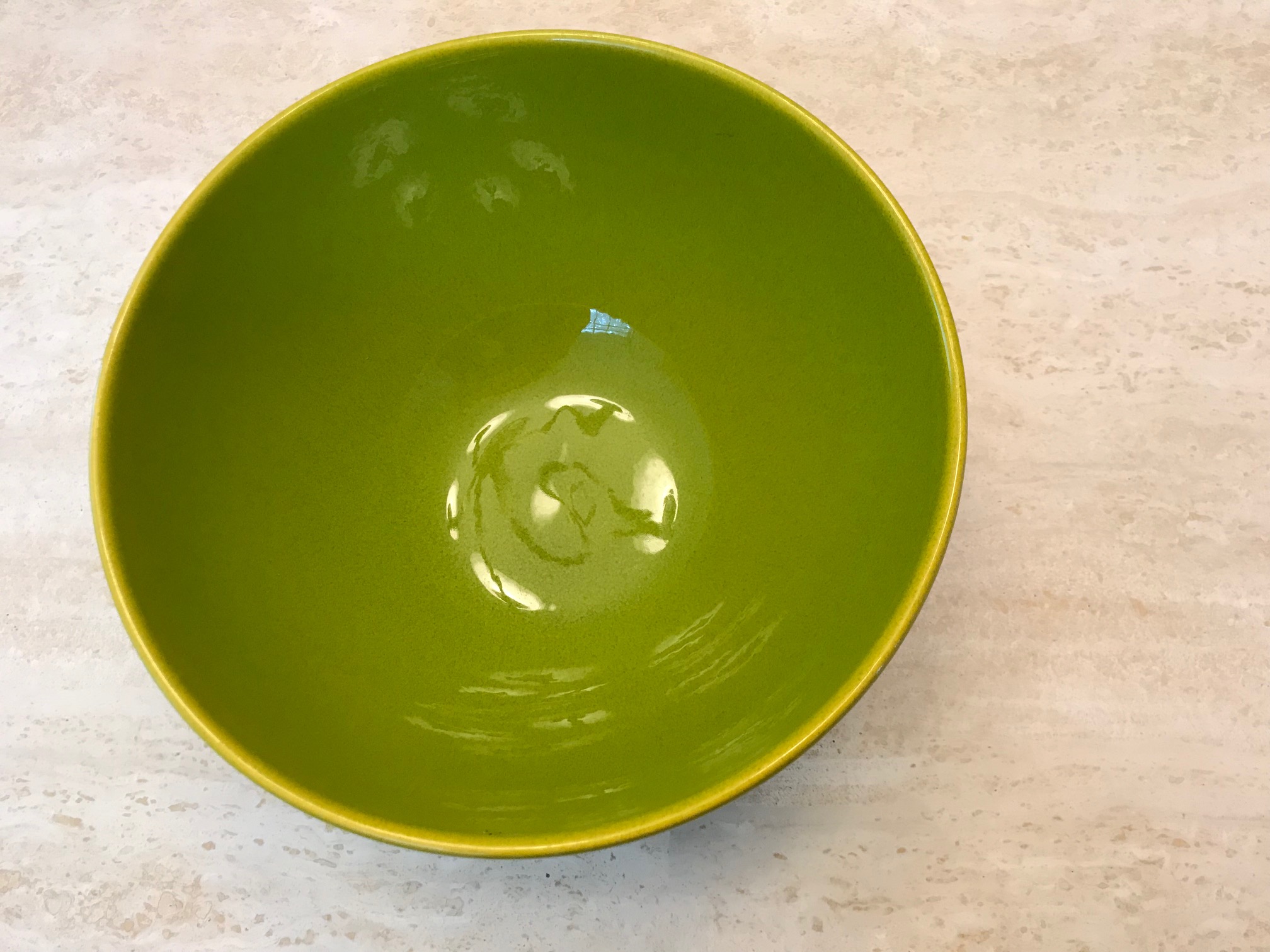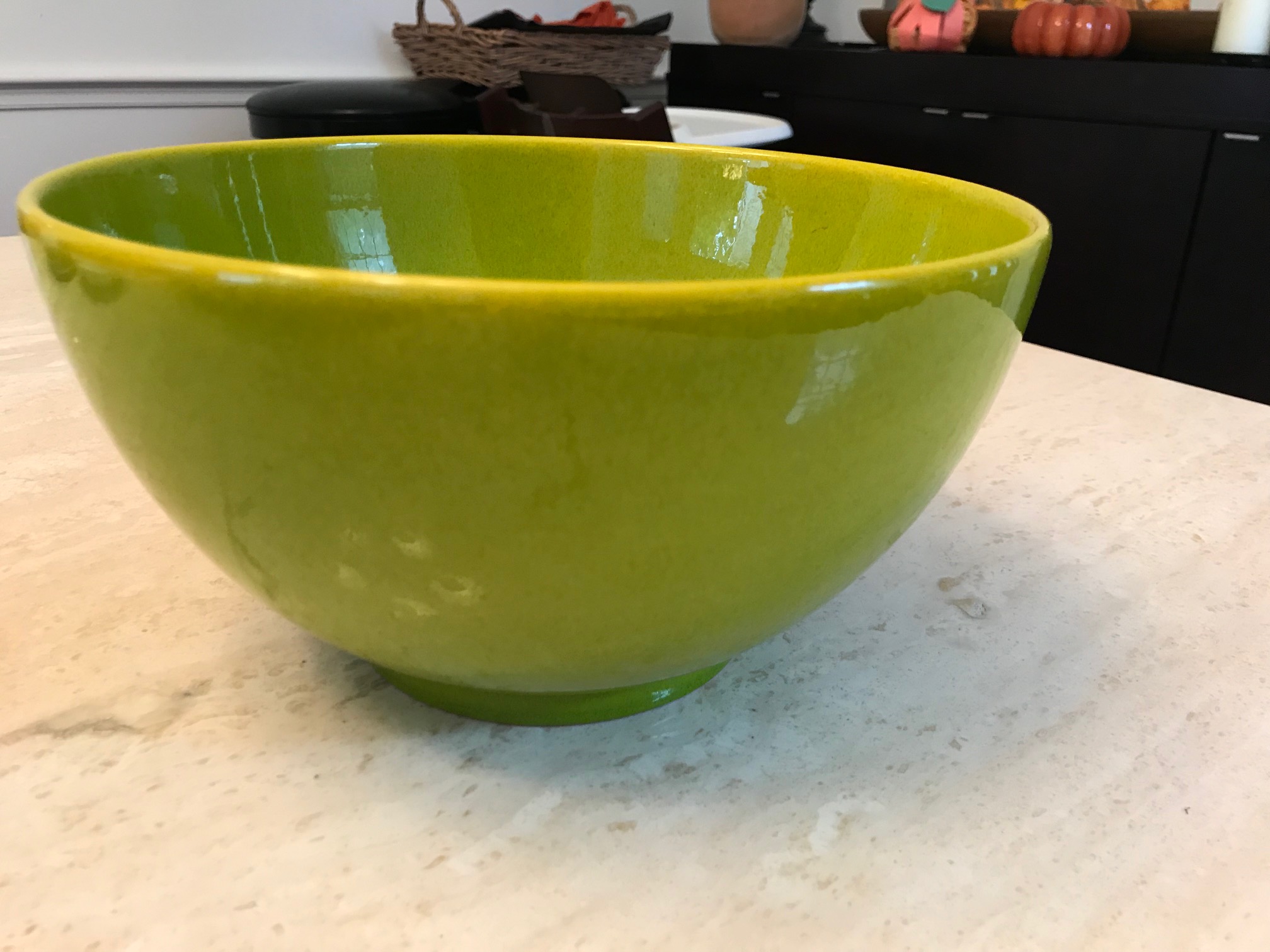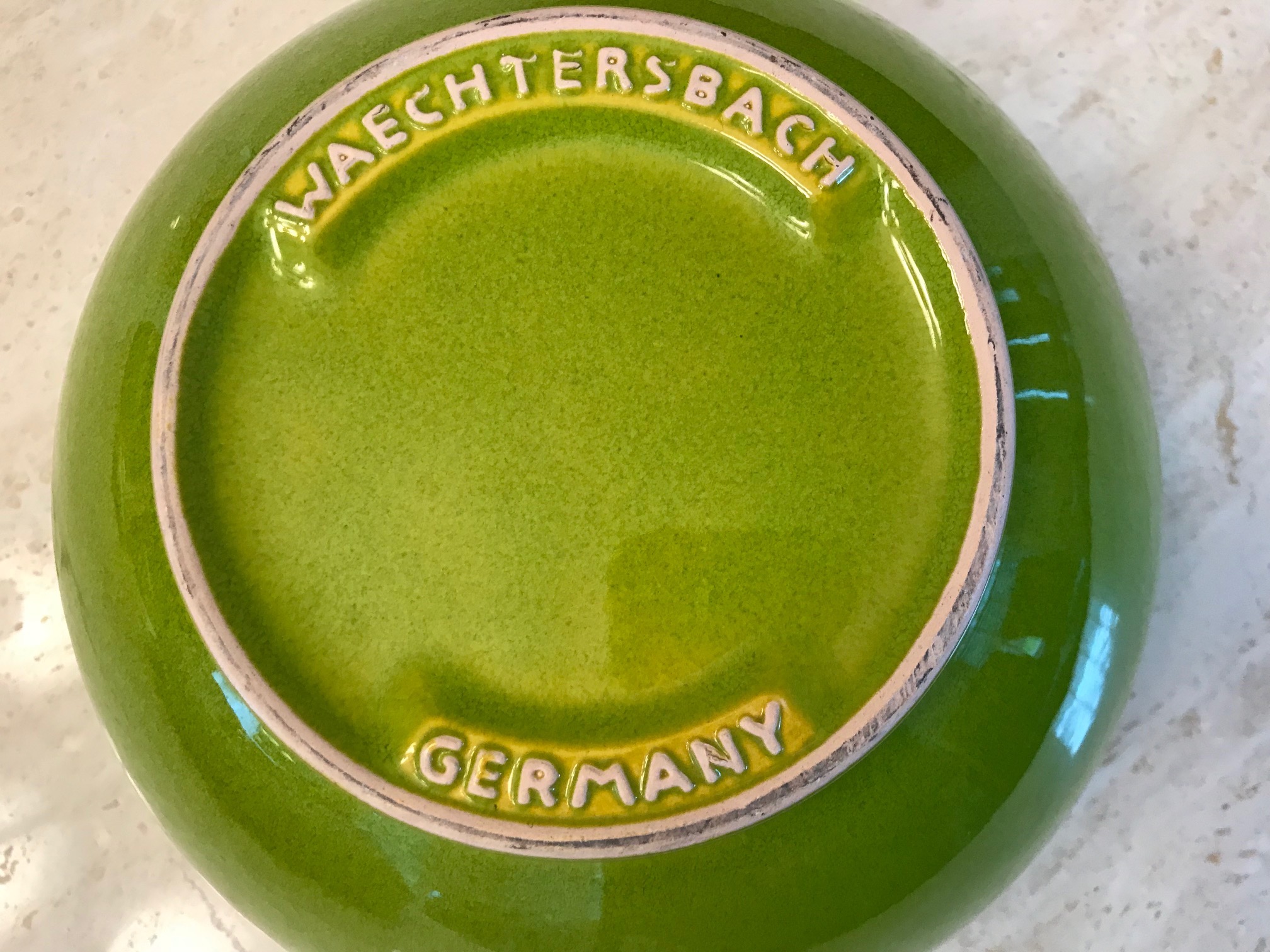#Leaded: Green Waechtersbach German Nesting Bowl, c. 2009
Green Waechtersbach Bowl from Williams Sonoma –
Made in Germany, c. 2009
To see more pieces by Waechtersbach that I have tested, click here.
When tested with an XRF instrument this bowl had the following readings:
- Lead (Pb): 53,000 +/- 1,900 ppm
- Cadmium (Cd): 4,988 +/- 293 ppm
- Mercury (Hg): Non-Detect / Negative
- Arsenic (As): Non-Detect / Negative
- Barium (Ba): 3,370 +/- 252 ppm
- Chromium (Cr): Non-Detect / Negative
- Antimony (Sb): Non-Detect / Negative
- Selenium (Se): Non-Detect / Negative
To learn more about XRF testing, click here.
Modern newly manufactured dishware today is not regulated for total lead content as detectable with an XRF instrument. Instead it is usually regulated to meet leach testing standards at the time of manufacture.
My concern is for what happens to a highly leaded piece as it deteriorates over time, especially pieces like this that are very high lead but also considered heirloom quality and are pieces that may be handed down from generation to generation (and may indeed become very well worn over time.)
To read more about my concern for lead in pottery and dishware, click here.
The only standard that one can compare these XRF test results to (comparing apples to apples) is the regulatory standard for lead in items specifically designed and marketed as intended for use by children.
The allowable limit for lead [as detectable with an XRF] in an item intended for use by children (including toys and dishware made expressly for use by children) is 90 ppm lead in the glaze or coating or 100 ppm lead in the substrate (the clay under the glaze.)
To reiterate, the lead level in this particular green bowl is 53,000 ppm.
If this bowl were intended for use by children it would be a violation of the Consumer Product Safety Improvement Act (CPSIA) of 2008. However this particular item is not sold or marketed to be used by children, even though one could imagine that with the bright colors of this line that it is highly likely that it might be used by children on a regular basis! In fact I once visited a home where this brand of bowl was expressly used for feeding the children in that home – because of the bright colors!
Can you say #RegulatoryLoophole?
All products I have ever tested by this brand have been VERY HIGH in lead when tested with an XRF instrument.
For curiosity’s sake only (not to purchase them!) to see more pieces from this brand on Amazon, click here.*
As always, thank you for reading and for sharing my posts.
Please let me know if you have any questions.
Tamara Rubin
#LeadSafeMama
*Amazon links are affiliate links. If you purchase something after clicking on one of these links I may receive a small percentage of what you spend at no extra cost to you. WHILE I DON’T WANT YOU TO BUY PRODUCTS FROM THIS PARTICULAR BRAND, I do encourage you to click on the Amazon link to see the other pieces from this brand that you might want to AVOID. Thank you for supporting my advocacy work in this way!

Never Miss an Important Article Again!
Join our Email List







I have 11 different colors, each having 6 full place settings of these dishes. I treasure them. My late husband and I got them while we lived in Germany and started out family. Is there anything I can do to protect my family while still using them?! Is there a sealant they can be dipped in?
They are so pretty. They are probably not leaching (depending on the age and how heavily used they might be), but you can’t tell without doing leach-testing. There is not a sealant or similar. I’m sorry I don’t have a better answer.
*our
Thank you so much for responding. My heart breaks thinking of not using them or getting rid of them but I don’t want hurt the family my husband and I created either. I’ve had them for 9.5 years… perhaps I should get a lead blood test to see if we have a higher lead content?
I’ll look into home leach-testing options for you. I really think it can only effectively be done in a lab and that can be very expensive!
-Our
Thank you so much! I definitely don’t want to harm the family we created. We use them regularly but in rotation. Themed colors for the holiday or season. They’re all still glossy and we don’t use the chipped ones. They are on display at all times however; only handled when in use. Time for a lead content blood test?.